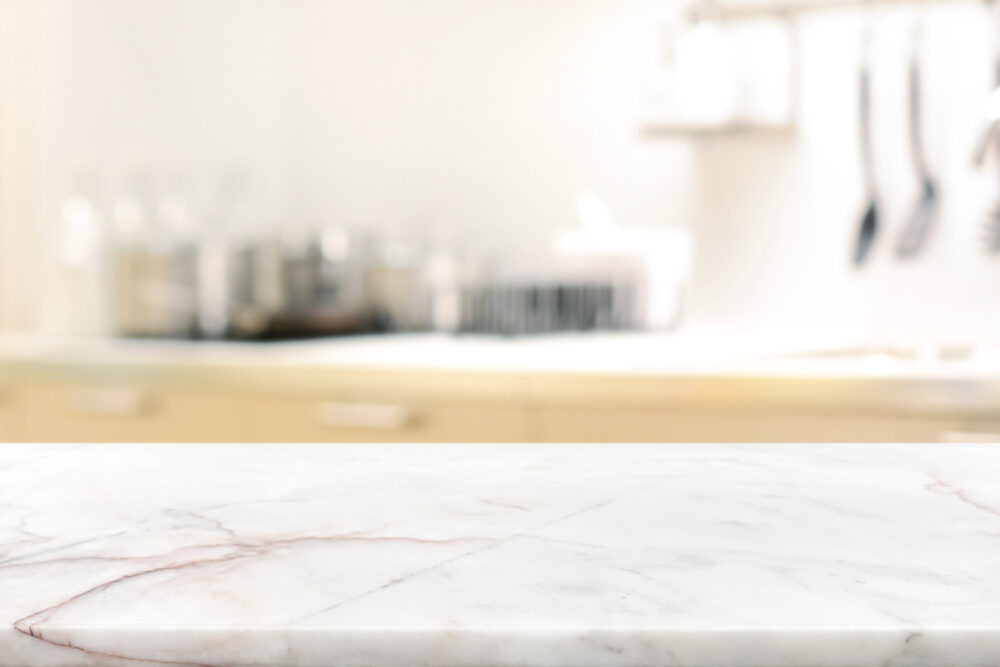Marble and Quartz Porosity: Staining and Bacteria Facts
You’re preparing dinner for your family when you notice a stubborn stain on your marble countertop that won’t budge, no matter how much you scrub. Meanwhile, your neighbor brags about how their quartz surface looks pristine after years of use. The difference isn’t just in cleaning habits—it’s all about marble and quartz porosity, and understanding this concept can save you both time and worry about hygiene in your kitchen.
Stone porosity refers to the tiny spaces and holes within the material’s structure, much like the holes in a sponge. These microscopic openings determine how easily liquids, stains, and bacteria can penetrate your countertop surface. When you understand how porosity affects your stone surfaces, you can make informed decisions about maintenance and choose the right material for your lifestyle. At Moreno Granite, we’ve helped many homeowners navigate these choices, and the science behind marble and quartz porosity reveals some surprising truths about cleanliness and durability that every homeowner should know.

Understanding Marble’s Natural Porosity
Marble forms through natural geological processes that create a beautiful but porous structure. This natural stone typically has a porosity rate between 0.4% to 2%, meaning that small percentages of the stone’s volume consists of interconnected pores. These tiny openings make marble susceptible to liquid absorption, which explains why that morning coffee spill can become a permanent reminder if not cleaned immediately.
The calcium carbonate composition of marble makes it particularly vulnerable to acidic substances. When lemon juice, wine, or vinegar contacts the surface, it doesn’t just stain—it actually etches the stone by dissolving the calcium carbonate. This chemical reaction creates microscopic rough spots that can harbor bacteria and make future cleaning more challenging.
Research from the Natural Stone Institute shows that unsealed marble can absorb liquids within minutes of contact. However, proper sealing can dramatically reduce this absorption rate, creating a protective barrier that gives you time to clean spills before they penetrate the stone.
Quartz: Engineered for Lower Porosity
Engineered quartz countertops tell a different story entirely. Manufactured from natural quartz mixed with polymer resins, these surfaces have virtually zero porosity. The manufacturing process creates a dense, non-porous surface that resists liquid penetration almost completely.
This engineered approach means that most spills, including red wine, coffee, and cooking oils, remain on the surface rather than seeping into the material. The non-porous nature of quartz also makes it significantly more resistant to bacterial growth, as microorganisms cannot penetrate the surface to establish colonies in the deeper layers of the material.
Independent laboratory testing demonstrates that sealed quartz surfaces show bacterial counts up to 1000 times lower than natural stone alternatives after identical exposure periods. This makes quartz an excellent choice for families with young children or anyone particularly concerned about kitchen hygiene.
Practical Implications for Your Home
The porosity differences between marble and quartz translate into real-world maintenance requirements that affect your daily routine. Marble requires annual sealing to maintain stain resistance, while quartz typically needs only regular cleaning with mild soap and water.
For bacterial concerns, both materials can be kept hygienic with proper cleaning, but quartz provides an extra margin of safety. The non-porous surface means that thorough cleaning removes virtually all bacterial presence, while marble may require more intensive cleaning methods to address bacteria that have penetrated deeper into the stone.
Your cooking and entertaining habits should influence your choice. Frequent wine service, citrus preparation, or heavy cooking might make quartz the more practical option, while occasional use in formal settings might make marble’s natural beauty worth the extra maintenance effort.
Making the Right Choice for Your Kitchen
Both marble and quartz can serve beautifully in your home when you understand their characteristics and maintenance requirements. Marble offers unmatched natural beauty and works wonderfully for homeowners who enjoy the ritual of caring for natural materials. Quartz provides peace of mind for busy households where low maintenance and maximum hygiene matter most.
The key lies in matching the stone’s properties to your lifestyle and priorities. Consider your family’s habits, your cleaning preferences, and your long-term maintenance goals when making this important decision. Contact Moreno Granite today for a personalized consultation where we’ll help you weigh the porosity factors alongside your aesthetic preferences and practical needs. Our team brings decades of experience helping families choose countertops they’ll love for years to come.
